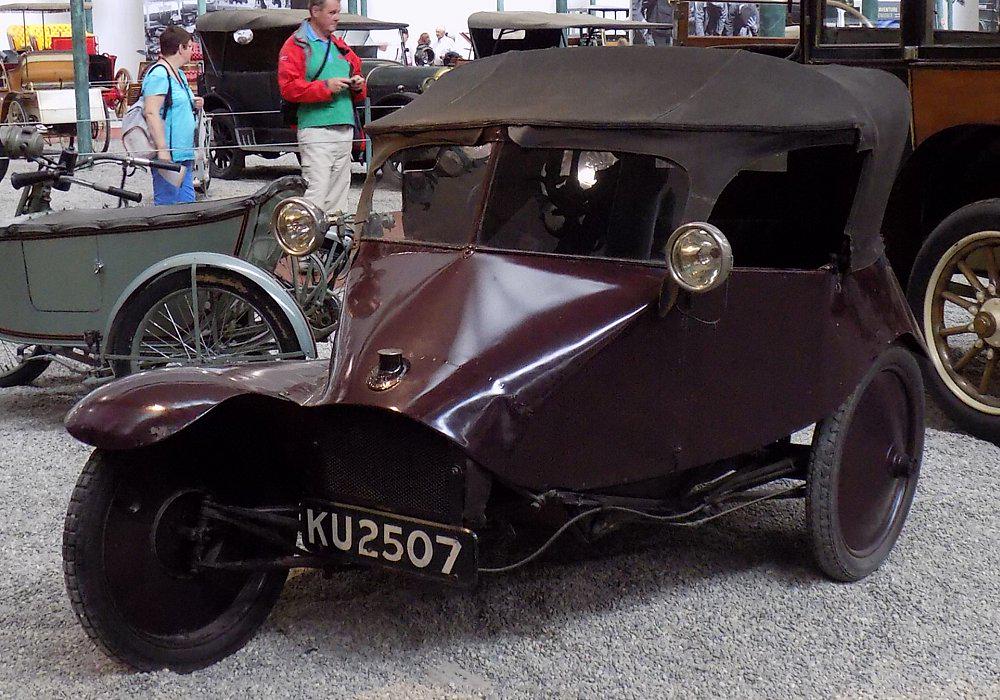The Scott Sociable Tricar, produced in 1923, was a three-wheeled vehicle manufactured by the Scott Autocar Company of Bradford, Yorkshire, an offshoot of the Scott Motorcycle Company.
Its development originated from a World War I three-wheeler designed for motor machine-gun service, which was never ordered by the military; Alfred Angas Scott then converted the design for civilian use, introducing the Sociable in 1916.
Production began in 1921 and ended in 1925, with the 1923 model being part of this run.
The 1923 Scott Sociable featured a triangulated tubular steel frame and a fibreboard body, with a unique layout derived from a motorcycle and sidecar combination, but with wheel steering via a rack and pinion system.
It was powered by a water-cooled, 578 cc twin-cylinder two-stroke engine, producing 4 kW (6 PS, 6 hp) at 1,000 rpm.
Power was transmitted through a three-speed gearbox to the offside rear wheel via a shaft drive, with no reverse gear available.
The vehicle had a maximum speed of 80 km/h (50 mph) and a wheelbase of 1,549 mm (61 in).
The car was designed to seat two people, with a passenger seated alongside the driver and a dickey seat available for a third passenger or luggage.
The driver started the engine by reaching down to open the fuel tap and then giving a sharp tug on the starting lever located inside the car.
Controls were conventional car-type, with a clutch pedal marked “C” and a brake panel marked “B”.
The 1923 model was available in Azure Blue or Grey, with one known example registered in 1924.
Production numbers are estimated to be between 50 and 200 vehicles, with only six known survivors currently documented.
The initial price in 1921 was £215, which dropped to £135 by 1923.
The company ceased operations in 1925.
Scott Sociable 1923

